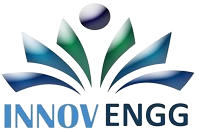In today’s competitive business landscape, delivering consistent quality isn’t just an advantage it’s a necessity. Companies that fail to maintain high standards risk losing customers, facing regulatory penalties, and falling behind their competitors. That’s where a well-designed Quality Management System (QMS) comes into play.
A Quality Management System (QMS) is a structured framework of policies, processes, and procedures that ensures an organization consistently meets customer requirements and regulatory standards. More than just a compliance tool, a robust QMS drives operational efficiency, enhances customer satisfaction, and safeguards your organization against risks and errors.
Designing an effective QMS might seem daunting, but by following a systematic approach from defining objectives and mapping processes to implementing quality controls and fostering continuous improvement you can create a system that strengthens your organization from the ground up. In this article, we’ll walk you through the key steps to design a robust QMS that not only meets standards but also empowers your team and builds trust with your customers.
Understanding Quality Management Systems
A Quality Management System (QMS) is more than a set of guidelines it is a structured framework that aligns processes, people, and technology to ensure products and services consistently meet or exceed expectations. Its core purpose is to enhance efficiency, maintain compliance, and foster customer satisfaction.
There are various types of QMS depending on industry needs. ISO 9001 is the most widely recognized international standard, focusing on consistent quality and continuous improvement. Some industries adopt specific standards, such as ISO 13485 for medical devices or AS9100 for aerospace. Organizations may also develop internal QMS frameworks, tailored to their unique processes and objectives.
Implementing a robust QMS offers multiple benefits: it reduces errors and waste, strengthens regulatory compliance, enhances customer trust, and promotes a culture of accountability and continuous improvement. A well-structured QMS transforms quality from a reactive process into a proactive organizational strategy.
Define Quality Objectives and Scope
Before designing a QMS, it is essential to define clear, measurable quality objectives aligned with your business goals. These objectives should be specific, achievable, and trackable, serving as benchmarks for evaluating the effectiveness of your system.
Equally important is defining the scope of your QMS. This involves identifying the processes, departments, products, and services that the system will cover. A clear scope ensures that no critical areas are overlooked and helps focus resources where they matter most. Top management commitment is vital at this stage, as their support sets the tone for organization-wide adherence and accountability.
Identify Key Processes and Requirements
A robust QMS starts with a thorough understanding of key processes and workflows. Mapping these processes allows you to pinpoint critical steps, interdependencies, and potential areas of risk.
You must also identify customer requirements and regulatory obligations relevant to your industry. This ensures that the system not only meets internal quality goals but also aligns with external expectations. Clearly defining process inputs, outputs, and responsibilities guarantees that everyone knows their role and contributes to overall quality objectives.
Develop Policies and Procedures
Once the foundation is laid, the next step is to create quality policies and procedures that formalize expectations. Policies should clearly articulate the organization’s commitment to quality, while Standard Operating Procedures (SOPs) and work instructions provide step-by-step guidance for executing tasks consistently.
Proper documentation is essential not only for compliance but also for ensuring clarity and repeatability. All procedures should meet regulatory standards and be easily accessible to employees for reference and training purposes.
Establish Roles, Responsibilities, and Accountability
A QMS succeeds only if people understand their roles. Assign process owners and quality champions to oversee critical areas. Define responsibilities for monitoring, auditing, and reporting, so accountability is clear at every level.
Encourage a culture of quality, where every employee feels responsible for maintaining standards and contributing to continuous improvement. This cultural shift is often as important as the system itself.
Implement Quality Controls and Tools
Quality management isn’t just about policies it requires practical tools and controls. Techniques like PDCA (Plan-Do-Check-Act), Six Sigma, and FMEA help identify risks and optimize processes.
Establish metrics and KPIs to monitor performance objectively. Where possible, integrate automated systems for data collection and analysis, enabling real-time insights and more informed decision-making.
Training and Competence Development
Even the best QMS fails without skilled personnel. Start by assessing skill gaps and designing targeted training programs to address them.
Continuous training ensures that employees are not only competent in their roles but also aware of evolving quality standards and organizational expectations. This builds a workforce capable of sustaining high-quality outcomes over time.
Monitor, Measure, and Audit
A QMS requires ongoing evaluation. Conduct internal audits and inspections regularly to verify compliance and identify areas for improvement.
Measure performance against established KPIs and create feedback loops that inform corrective actions. Monitoring and auditing are essential for ensuring the system evolves alongside organizational needs.
Continuous Improvement and Risk Management
A robust QMS is never static. Use audit findings and performance data to identify improvement opportunities and implement corrective actions.
Proactively manage risks to prevent quality failures before they occur. Encouraging a culture of innovation and learning ensures that your QMS evolves continuously, keeping your organization competitive and resilient.
Leveraging Technology for QMS
Modern QMS solutions leverage digital tools to streamline documentation, track performance, and automate reporting.
Digital systems provide real-time insights, facilitate compliance, and improve scalability making it easier for organizations to maintain consistent quality standards across multiple departments and locations.
Conclusion
Designing a robust Quality Management System is a strategic investment in your organization’s future. By understanding QMS principles, defining objectives, mapping processes, establishing policies, and fostering a culture of accountability and continuous improvement, you can achieve operational efficiency, regulatory compliance, and high customer satisfaction.
At Innovengg, we specialize in helping businesses design and implement tailored QMS frameworks that streamline operations, reduce risks, and enhance product and service quality. Whether you’re starting from scratch or looking to upgrade your existing system, our team provides expert guidance and practical solutions to ensure your QMS not only meets standards but also drives sustainable growth.
Take the first step today partner with Innovengg to build a QMS that strengthens your organization, empowers your team, and boosts customer trust.

